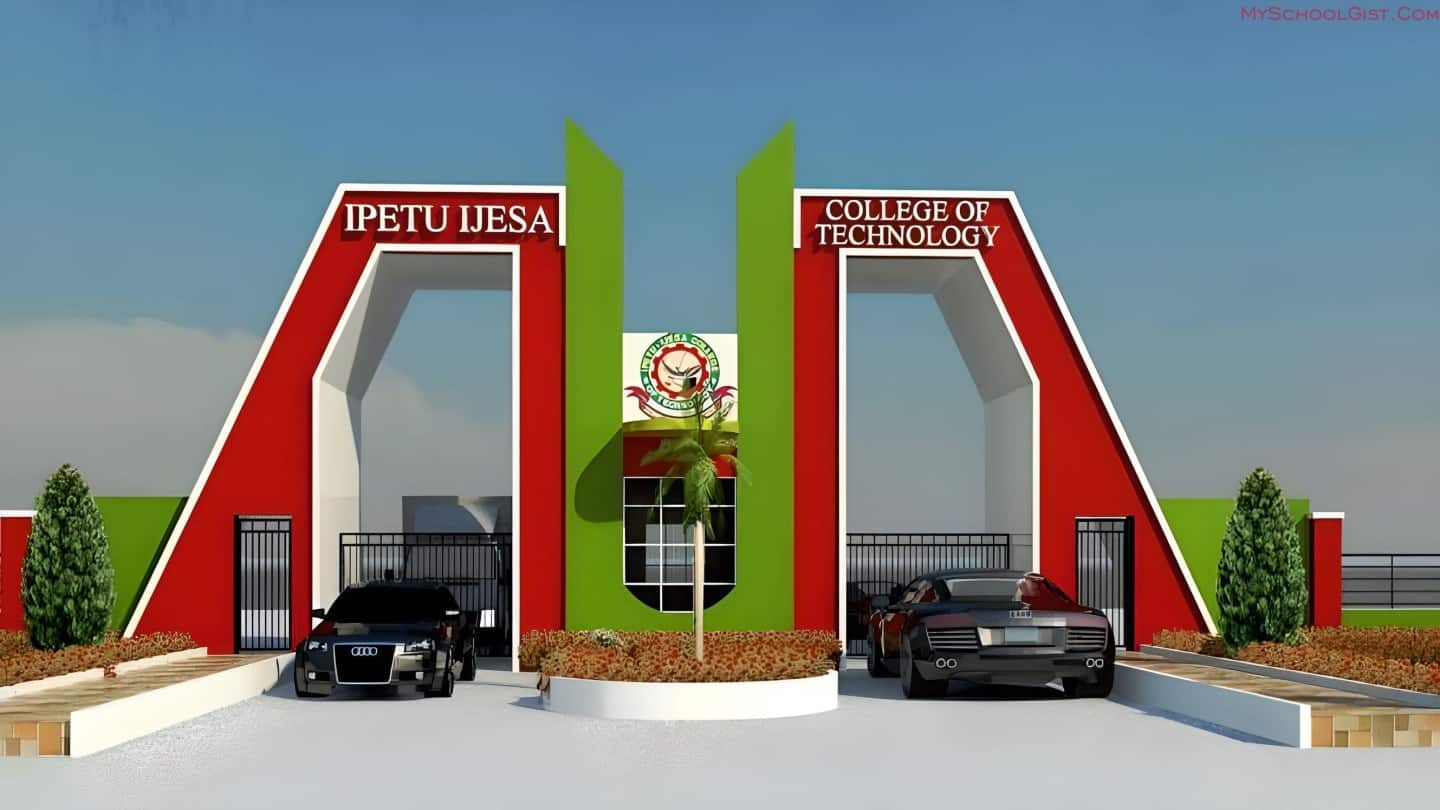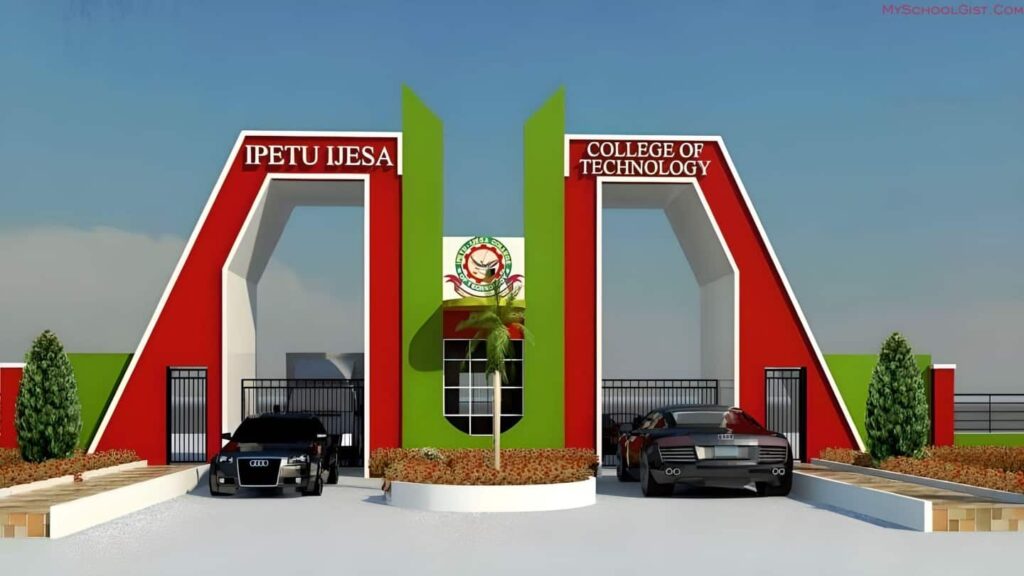The Osun College of Management Science (OSCOMS), Ipetu Ijesha, has received approval from the National Board for Technical Education (NBTE) to offer six new programmes. These are available on both full-time and part-time bases. Read on for details about the programmes and how to apply.

The National Board for Technical Education (NBTE) has approved six new programmes for Osun College of Management Science (OSCOMS), Ipetu Ijesha.
These programmes are now open for full-time and part-time students.
Approved Programmes
- ND in Business Administration and Management
- ND in Accountancy
- ND in Computer Science
- ND in Mass Communication
- ND in Public Administration
- ND in Marketing
An ND in Law is proposed for the 2025/2026 academic session.
Next Steps for Candidates
- Visit a JAMB CBT centre to change your institution to OSCOMS.
- Upload your O’Level results to qualify.
You can also explore available scholarship opportunities by applying through the official OSCOMS portal.
OSCOMS continues to advance education by expanding its offerings to meet the needs of students.
Collaboration between educational institutions and industries is essential in shaping a curriculum that meets the evolving demands of the job market. By working together, educators and industry professionals can ensure that students are equipped with the knowledge, skills, and experiences necessary for success in their careers. This article explores the significance of such partnerships, the process of understanding industry needs, designing relevant curriculum, implementing practical projects and internships, and evaluating the impact of industry-driven education. Additionally, it examines the challenges faced in collaboration and offers best practices for fostering successful partnerships that benefit both students and industries.
1. Importance of Collaboration between Educational Institutions and Industries
Understanding the Benefits of Collaboration
When educational institutions and industries join forces, magic happens. By working together, they can create a curriculum that is not just theoretical but practical, preparing students for the real world.
Enhancing the Relevance of Education
Gone are the days of outdated textbooks and lectures with no real-world application. Collaboration with industries ensures that education remains relevant and up-to-date, meeting the needs of today’s fast-paced world.
Boosting Student Employability
Students armed with industry-relevant skills are like superheroes in the job market. Collaboration between educational institutions and industries equips students with the tools they need to succeed in their careers.
2. Understanding Industry Needs and Trends
Researching Industry Requirements
Educational institutions need to stay on top of what industries are looking for in potential employees. Researching industry requirements is key to designing a curriculum that produces job-ready graduates.
Analyzing Market Trends
Knowing the latest market trends can help educational institutions tailor their programs to meet the evolving needs of industries. It’s like having a crystal ball into what skills will be in demand in the future.
Engaging with Industry Stakeholders
Building relationships with industry stakeholders is essential for understanding their needs and staying in tune with the pulse of the market. Collaboration helps bridge the gap between academia and industry.
3. Designing Curriculum to Meet Industry Demands
Aligning Curriculum with Industry Standards
A curriculum that aligns with industry standards is like a golden ticket for students entering the workforce. Educational institutions must ensure that what they teach matches what the industry wants.
Incorporating Practical Skills and Knowledge
Gone are the days of just theory – practical skills are now a must-have. By incorporating hands-on learning experiences, educational institutions can better prepare students for the challenges they’ll face in their careers.
Adapting Curriculum to Changing Industry Needs
Industries evolve, and so should education. Adapting the curriculum to changing industry needs ensures that graduates remain competitive and relevant in the ever-changing job market.
4. Implementing Collaborative Projects and Internships
Creating Hands-On Learning Opportunities
Theory is important, but nothing beats hands-on experience. Collaborative projects and internships provide students with the chance to apply their knowledge in real-world scenarios, building their skills and confidence.
Facilitating Industry Partnerships
Strong partnerships with industries create a win-win situation. Educational institutions gain insights into industry needs, while industries get a pipeline of skilled talent. It’s a match made in heaven.
Developing Internship Programs
Internships are like a dress rehearsal for the real deal. By developing robust internship programs, educational institutions give students a taste of what it’s like to work in the industry, helping them make a smooth transition from classrooms to boardrooms.
5. Ensuring Student Preparedness for the Job Market
Developing Career-Ready Skills
Educational institutions and industries work together to ensure students develop practical skills that directly translate to the job market. This collaboration helps students learn relevant industry-specific skills, making them more competitive and prepared for employment.
Providing Professional Development Opportunities
By offering professional development opportunities, such as workshops, internships, and mentorship programs, students can gain hands-on experience and exposure to real-world scenarios. This collaboration helps bridge the gap between academic knowledge and practical skills needed in the workplace.
Offering Industry Certifications
Educational institutions can collaborate with industries to offer industry certifications that validate students’ skills and knowledge. These certifications not only enhance students’ credibility but also demonstrate their readiness for specific roles within the industry.
6. Evaluating the Impact of Industry-Driven Curriculum
Measuring Student Success and Satisfaction
It’s crucial to measure student success and satisfaction with industry-driven curriculum to ensure its effectiveness. Feedback from students on their learning experience and outcomes can help institutions and industries make necessary adjustments to enhance the curriculum.
Assessing Employability and Job Placement Rates
Tracking employability and job placement rates of students who have undergone industry-driven curriculum provides valuable insights into its impact. This evaluation helps determine the curriculum’s alignment with industry needs and its ability to prepare students for successful career opportunities.
Gathering Feedback from Industry Partners
Engaging with industry partners to gather feedback on the curriculum ensures its relevance and responsiveness to current industry trends and demands. Industry input helps educational institutions adapt and tailor their programs to better meet the evolving needs of the workforce.
7. Overcoming Challenges in Collaboration
Addressing Communication Barriers
Clear and open communication is key to successful collaboration between educational institutions and industries. Addressing communication barriers, such as misunderstandings or differing expectations, promotes mutual understanding and effective partnership.
Managing Expectations and Resources
Balancing expectations and resources is essential for a fruitful collaboration. Both parties should align on goals, timelines, and resource allocations to ensure a productive partnership that benefits students and meets the needs of the industry.
Navigating Differences in Goals and Timelines
Educational institutions and industries may have distinct goals and timelines, which can pose challenges in collaboration. By finding common ground and understanding each other’s perspectives, both parties can work towards alignment and synergy in developing curriculum that serves the interests of students and the industry.
8. Best Practices for Successful Partnerships
Establishing Clear Objectives and Expectations
Setting clear objectives and expectations from the outset of the collaboration helps establish a common understanding of goals and deliverables. Clear communication on roles and responsibilities fosters a collaborative environment focused on achieving mutual success.
Cultivating Trust and Communication
Building trust through transparent communication and mutual respect is essential for a successful partnership. Trust serves as the foundation for effective collaboration, enabling both educational institutions and industries to work together towards shared goals with confidence and integrity.
Maintaining Long-Term Partnerships
Sustaining long-term partnerships requires ongoing commitment and dedication from both parties. By nurturing relationships, adapting to change, and continuously striving for improvement, educational institutions and industries can create enduring collaborations that benefit students, the workforce, and the community as a whole.In conclusion, the collaboration between educational institutions and industries plays a crucial role in preparing students for the workforce of tomorrow. By aligning academic programs with industry requirements, providing practical learning opportunities, and fostering strong partnerships, we can ensure that graduates are well-equipped to meet the demands of the ever-changing job market. It is through these collaborative efforts that we can bridge the gap between education and industry, ultimately benefiting both students and the workforce as a whole.
FAQ
How does collaboration between educational institutions and industries benefit students?
What steps can educators take to ensure the curriculum is relevant to industry needs?
What are some common challenges faced in collaborative partnerships between academia and industry?


